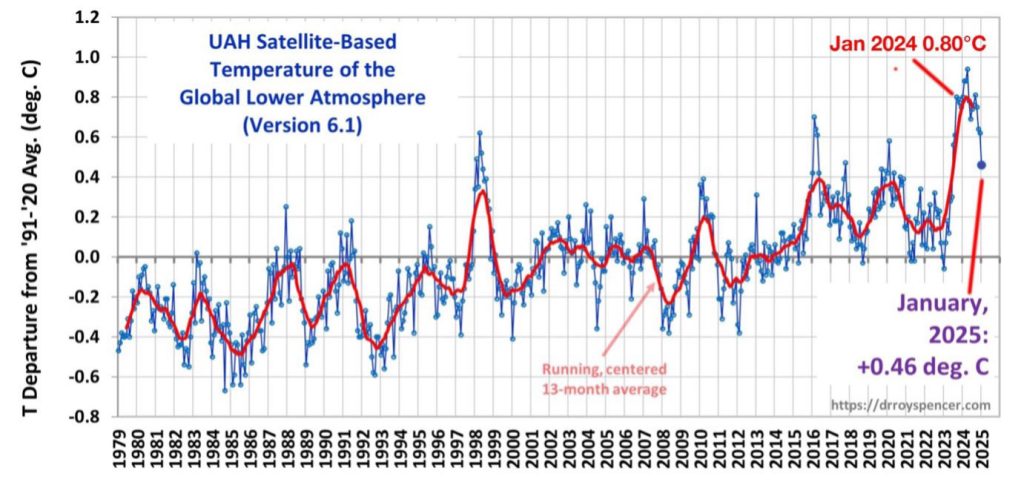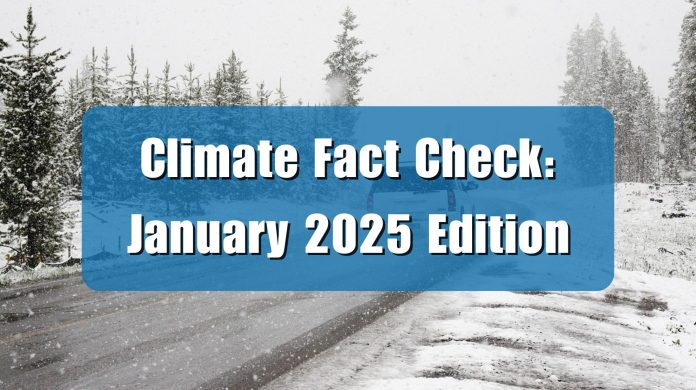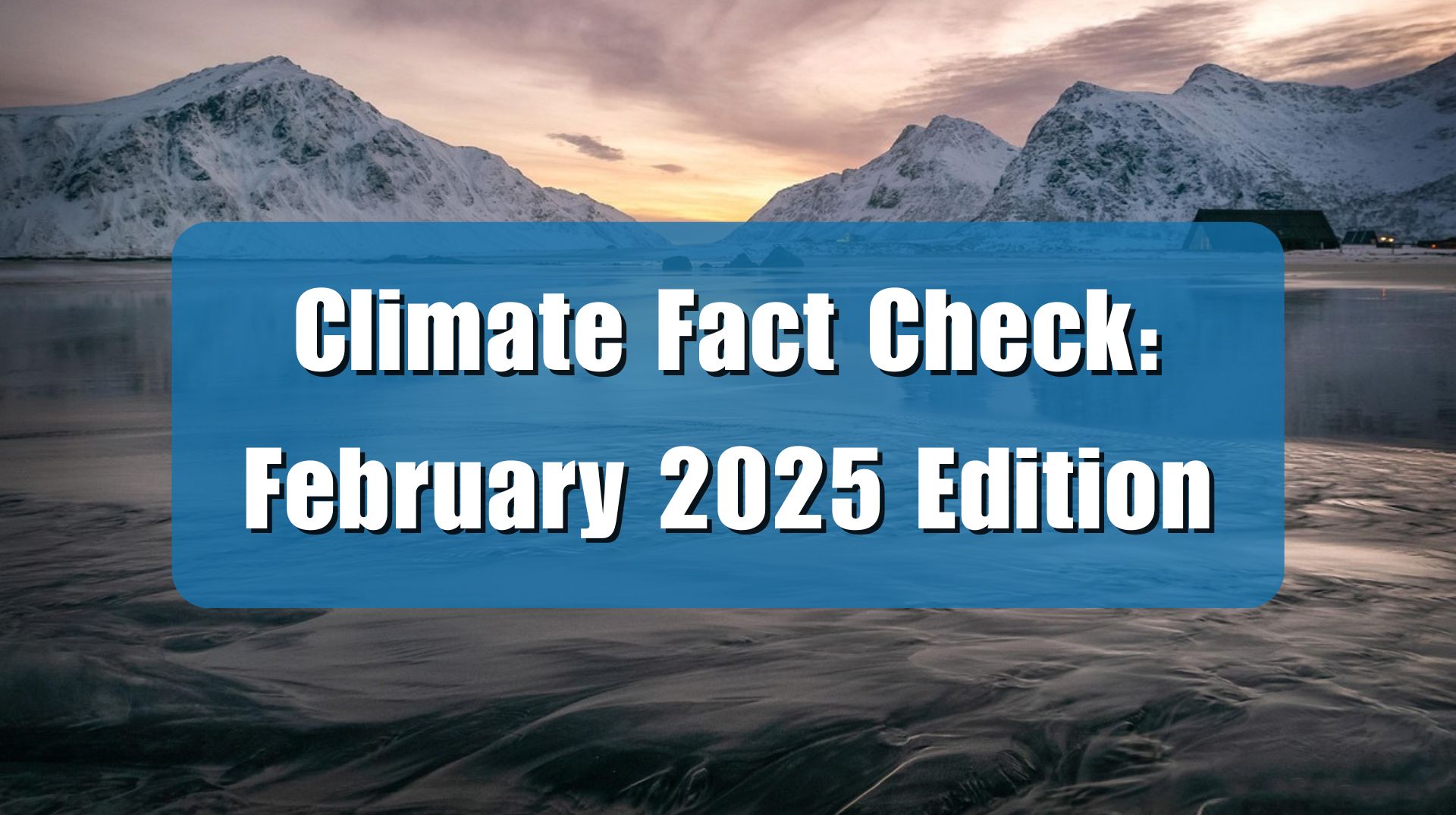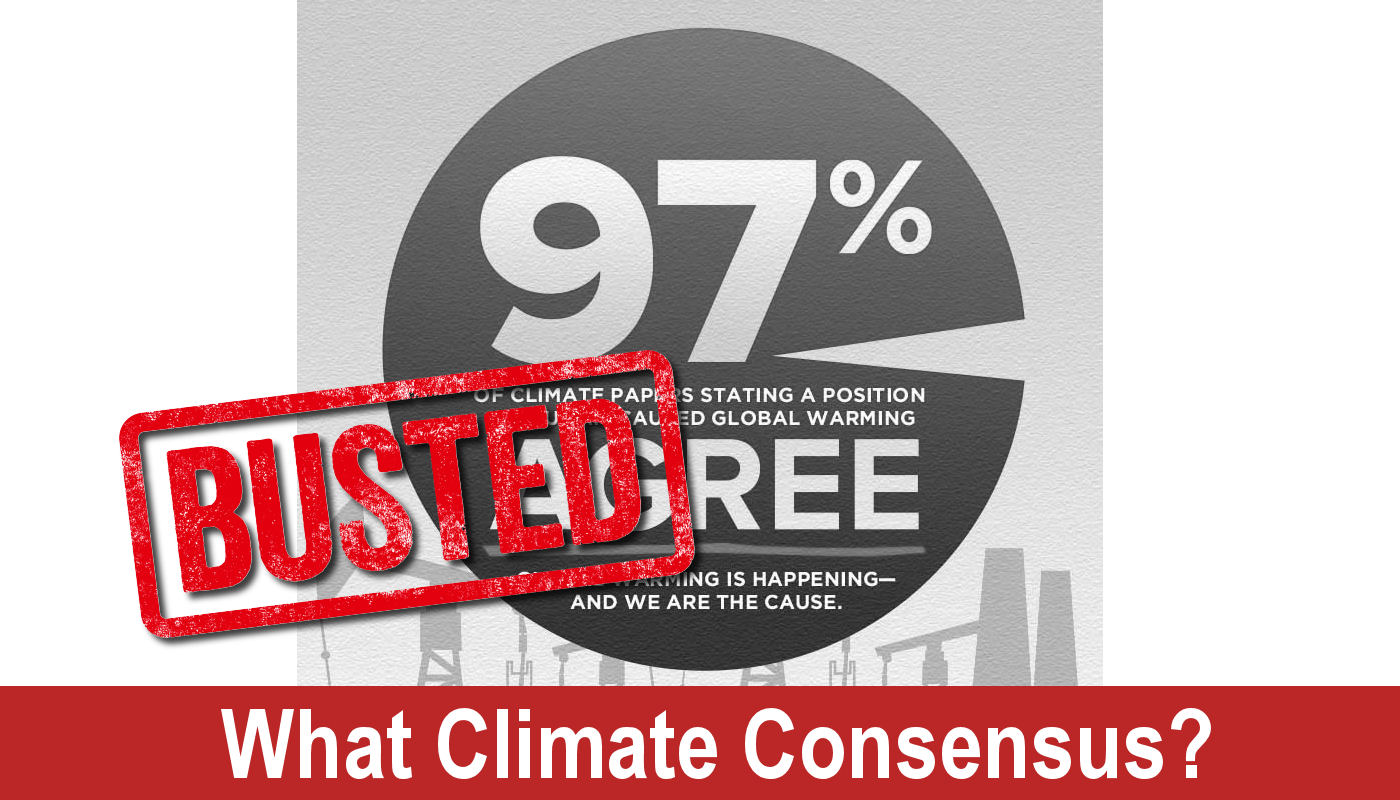Guest Post by: The Competitive Enterprise Institute, The Heartland Institute, the Energy & Environmental Legal Institute, the Committee for a Constructive Tomorrow, and the International Climate Science Coalition, and Truth in Energy and Climate.
Editor’s note: This summary serves as a fact check on the most egregious false claim about climate change made in the media in January 2025.
Counter-Narrative Reality vs. Counter-Reality Narrative
It was a busy January keeping track of President Trump’s first steps toward dismantling
of the federal government’s Climate Leviathan. It was also a very cold January and that’s
what this edition of Climate Fact Check will cover.
Per the relatively unmanipulated NASA satellite data, January 2025 is estimated to have witnessed a substantial drop of 0.34°C from last January with respect to the made-up metric of “average global temperature.” This is despite that atmospheric carbon dioxide increased from about 422 parts per million (ppm) in January 2024 to 426 parts per million in January 2025. That 4 ppm increase in carbon dioxide is worth about 78 billion tons of emissions. Therefore, 78 billion more tons of carbon dioxide in the atmosphere resulted in a January that was 0.34°C cooler than the previous January. February is typically the coldest average month in the Northern Hemisphere. January 2025 was cooler than February 2016 and about the same as January 2016 and February 1998, hundreds of billions of tons of CO2 and a decade of “warming,” ago.

Faced with the counter-narrative reality of the NASA satellite data, the desperate climate hoax machine produced a counter-reality narrative, claiming that January was the hottest ever as in this Associated Press report.
 The Associated Press story is based on a claim from the European Union’s Copernicus Climate Change Service which estimated that January 2025 was slightly warmer than January 2024.
The Associated Press story is based on a claim from the European Union’s Copernicus Climate Change Service which estimated that January 2025 was slightly warmer than January 2024.

Who do you believe? Keeping in mind that there is no such physical place with “average global temperature” and that the “metric” is just a guesstimate invented for the climate hoax, the NASA satellite data is likely more credible. The NASA satellite data is an estimate based on one type of data – satellite measurements of atmospheric brightness. In contrast, the Copernicus estimates are a black box mélange of surface temperature data going back to 1940 and European satellite data. That surface temperature data can be wildly inaccurate and biased upward due to the urban heat island effect compromising temperature station readings as it is in the US. How the surface data actually get merged with the satellite data is also a troubling mystery. We’re going with the NASA satellite data’s counter-narrative as a better gauge of reality.
We will close out this month by noting that President Trump has by Executive order instructed the U.S. Environmental Protection Agency and the White House Office of Management and Budget to begin reconsidering the EPA’s infamous 2009 “endangerment finding,” which determined carbon dioxide and other greenhouse gases harm the public health and welfare. The endangerment finding is the linchpin of virtually all federal government activity on climate change. We look forward to it being repealed.
Until next month, enjoy these and other great climate fact checks at:
- No, Associated Press, the Projected Increase in Heat-Related Deaths in Europe
- No, KXAN-TV, Claims That Climate Change Is Affecting Children’s Mental and Physical Health Is Flat Wrong
- Media Pushes Bogus ‘Hydroclimate Whiplash’ with Suspicious Timing
- No, CNN and BBC, 2024 Wasn’t the ‘Hottest Year on Record’
- Newsweek Claims U.S. Cities Would be Underwater by 2050, Forgets the Same Predictions Were made for 2000 and 2020
- Massive Antarctic Iceberg Calving Not Caused by Climate Change
- False, Washington Post, Climate Change Isn’t Causing a Rat Crisis
- BBC Rides to the Rescue as Scientists Inconveniently Find the Gulf Stream Isn’t Getting Weaker
- Trump’s Withdrawal From the Paris Agreement Won’t Hurt the Climate
- Fake News, CNN and UN, Climate Change Is Not Disrupting Latin America’s Food Production
See you in March for the February Climate Fact Check!
Originally posted at JunkScience.com, reposted with permission.



















